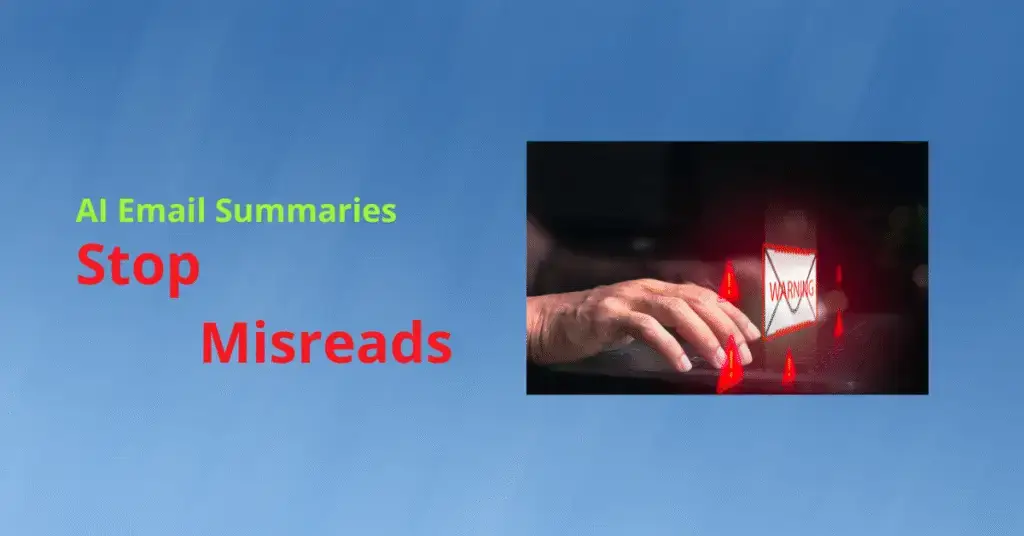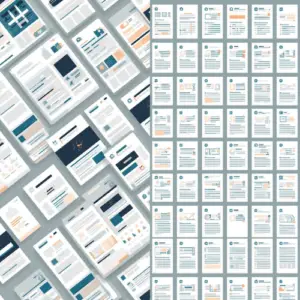
Key Takeaways
- Design your opener so AI email summaries echo intent.
- Lead with the ask — owner and deadline immediately.
- Add a TLDR on line two with decision.
- Front load first 140 characters with facts and amounts.
- Use descriptive links — label attachments clearly before sign off.
You want messages that are quickly understood across inboxes and time zones, and AI email summaries promise to help busy readers scan your note in seconds. But these systems can flatten nuance, miss intent, or clip crucial details—especially when formatting, links, or tone get in the way. Therefore, write with summary engines in mind so human readers—and the machines that assist them—both get the right message the first time. When you design for AI email summaries, your first line becomes your most valuable real estate.
What is actually happening to your emails?
- Two things shape understanding before anyone reads deeply: the message preview (first 1–3 body lines) and AI summaries (Outlook Copilot / Gmail Gemini) that condense long threads.
- Outlook (Microsoft 365 + Copilot): Shows a summary card at the top of long threads with citations back to specific emails; can summarize common attachments. Won’t summarize encrypted or certain sensitivity‑labeled messages; scoped to the primary mailbox.
- Preview lines: Outlook’s list view pulls the start of the body. Layout/density settings change how many lines display, but the first ~140 characters do the heavy lifting.
- Gmail for Workspace: Offers “Summarize this email” on long threads. Same rule: clear, factual line one and descriptive links get surfaced.
- Bottom line: Subject + first 1–3 lines + a TL;DR determine what humans and models act on. Make that area the single source of truth.
Why should you make your emails Summary-proof?
- Misreads cost money: A clipped CTA or truncated price can delay approvals or stall deals.
- Time zones amplify confusion: When recipients read on the go, they decide from the Summary whether to open or snooze.
- Compliance risk is real: Regulated teams need clear disclaimers and auditable wording; hallucinated highlights are a problem.
- Marketing efficiency depends on clarity: If your team relies on email marketing AI to prioritize replies, the wrong Summary means the wrong follow-up. Many marketing teams now route escalations using email marketing AI, so precision in your opening lines matters twice.
How to write emails that survive AI readers
- Start with the ask in sentence one. State the action, owner, and deadline. For example, “Please approve the Q3 budget by Friday at 18:00 IST so we can place the order.”
- Front-load vital details in the first ~140 characters. That’s the fragment most summarizers weigh heavily, and it’s the snippet AI email summaries often quote verbatim.
- Use a Summary after line one. Example: “Sum Up — 2 options, I recommend Option B; need a yes/no today.” This boosts the chance that AI email summaries echo your real message.
- Keep subjects’ machine-scannable. Pattern: [Action] + [Object] + [When]. Example: “Approve vendor contract — ACME — by Aug 22.” Avoid jokes or wordplay in the subject.
- Format for extraction. Use short paragraphs, simple bullets, and plain punctuation. Avoid nested tables and tiny fonts from pasted docs.
- Name things consistently. Use canonical project names, currency codes (USD, INR, EUR), and ISO-style dates (2025-08-22) to reduce misreads.
- Make links descriptive. Replace “here” with “Statement of Work (PDF)” so a model knows what the link represents.
- Don’t hide the CTA in signatures or banners. Place it in body text near the top.
- State privacy and sensitivity explicitly. Example: “Internal use only; do not forward outside ACME.”
Best practices checklist (copy/paste into your template)
- Subject = intent first: Approve/Review/Decide.
- First line = ask + owner + date.
- Summary within line two (or a bold label in rich text; include the plain words “Summary” in the text version).
- One idea per paragraph; bullets ≤ 6 items.
- Call out numbers, dates, and amounts with units (₹, $, %, days).
- Use direct verbs; avoid sarcasm and double negatives.
- Put decisions and next steps above threads and signatures.
- Provide a plain-text version if you send HTML.
- Before sending, skim the auto-generated preview your client shows; adjust line one if the preview buries the ask.
- For marketers, pre-flight test with common tools; check how Apple Mail AI summaries, Gmail AI features, and mobile lock-screen previews render your first two lines.
- Pilot with AI readers internally and capture what AI email summaries display so you can tune your first 140 characters.
Compliance and brand protection
- Include necessary disclaimers in plain language, not images.
- Avoid sensitive data in subjects. Put IDs and account numbers only in the body if required, and mask where possible.
- Log what changed: “Updated pricing from ₹1.2M to ₹1.15M based on volume.” Machines latch onto numerals—use that to your advantage.
- For automation teams, align email templates with review workflows so audits can show exactly what was requested and when.
GEO optimization tips (works for US, EU, and India recipients)
- Normalize dates to YYYY-MM-DD and include local day names when timing matters: “Mon, 2025-08-25 (US morning, EU afternoon, India evening).”
- Offer local currency equivalents if the amount is material.
- Keep idioms neutral; prefer globally understood verbs (“confirm,” “approve,” “ship”).
- If sending multilingual, put the primary language first and keep the first 140 characters semantically equivalent across versions.
Conclusion
You can’t control how every model compresses text, and inbox features will keep evolving. But by structuring your subject, line one, and TL;DR for extractive and abstractive systems, you reduce misreads and speed up decisions. Therefore, treat summary-readability as a design constraint—your emails will work harder for humans and machines alike, and your team will move faster regardless of client or platform. When in doubt, write your opener so AI email summaries would faithfully echo your CTA, and remember that 4Thought Marketing can help you operationalize this standard across teams.
For structured implementation, 4Thought Marketing’s Email Summary‑Readability Audit provides diagnostics, a practical playbook, and pre‑flight guardrails for Outlook and Google Workspace; if desired, we can also produce exemplar first‑line and TL;DR patterns to jump‑start adoption.
Frequently Asked Questions (FAQs)
How do I make summaries show my CTA?
Put the ask, owner, and deadline in your first sentence, then add a TL;DR on line two.
Do Apple Mail AI summaries and Gmail AI features read images?
Rely on text. Use descriptive links and avoid image-only disclaimers.
How should I format dates and amounts for global teams?
Use yyyy-mm-dd and currency codes (INR, USD, EUR) with units and percentages.
Will email marketing AI route replies better if I change my opener?
Yes. Clear first lines improve priority scoring and reduce misrouted follow-ups.
How do Eloqua AI email optimization and Marketo Engage AI features fit?
Align templates and first-line patterns so scoring and routing models capture intent consistently.





